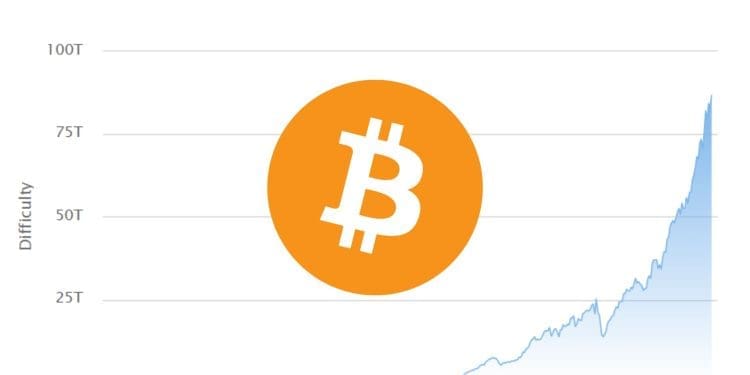- Bitcoin mining difficulty has reached an all-time high of 86.39 trillion hashes
- This increased difficulty comes just one week before the highly anticipated Bitcoin halving event
- The halving will reduce the mining reward for each block from 6.25 BTC to 3.125 BTC, leading to greater scarcity of new Bitcoin supply
Bitcoin’s mining difficulty has risen to its highest ever, a little over one week before the long-awaited halving event takes place.
Mining Difficulty Explained
Data from BTC.com shows that Bitcoin difficulty hit 8.639 trillion hashes yesterday. In simple terms, a hash is the process of turning data into code that cannot be deciphered using powerful computers. This proof-of-work mining model is necessary to keep the Bitcoin network running and secure.
Miners—those who mint new coins—generate hashes as part of the process. The longer the hash, the more computing power is needed to take part in mining. And the more computing power being used, the more secure the network.
Bitcoin’s difficulty rate has been gradually increasing since the start of the year, though there have been slight dips.
What the Next Difficulty Level Means
Bitcoin’s mining difficulty is set to jump tomorrow as the work part of proof-of-work shifts into yet another tier. The price of the biggest cryptocurrency by market cap, despite dropping today, has been on a roll this year—it’s up over 75% since the start of 2023. Another metric that keeps rising is the asset’s mining difficulty, which is expected to increase from 4.789 trillion hashes to 4.853 hashes tomorrow, according to CoinWarz data.
Bitcoin mining is the process of using powerful computers to verify and secure transactions on the Bitcoin blockchain. As mining difficulty increases, miners need more specialized equipment and higher amounts of energy to mine new bitcoins. This improved security comes ahead of the halving.
The Halving Event
The halving is a quadrennial event that will cut Bitcoin miner rewards in half—from 6.25 BTC for each block they process to 3.125 BTC. It’s currently expected to take place on April 20.
This is expected to lead to greater scarcity in the amount of coins on the market. Miners will have to work harder too, meaning that only the strongest and most efficient operations in the industry will be involved in keeping the network going.
And this is broadly considered good news—as the price of Bitcoin increases and more people flock to the network, the stronger it should be. The price of Bitcoin now stands at just above $70,000 per coin, according to CoinGecko.














